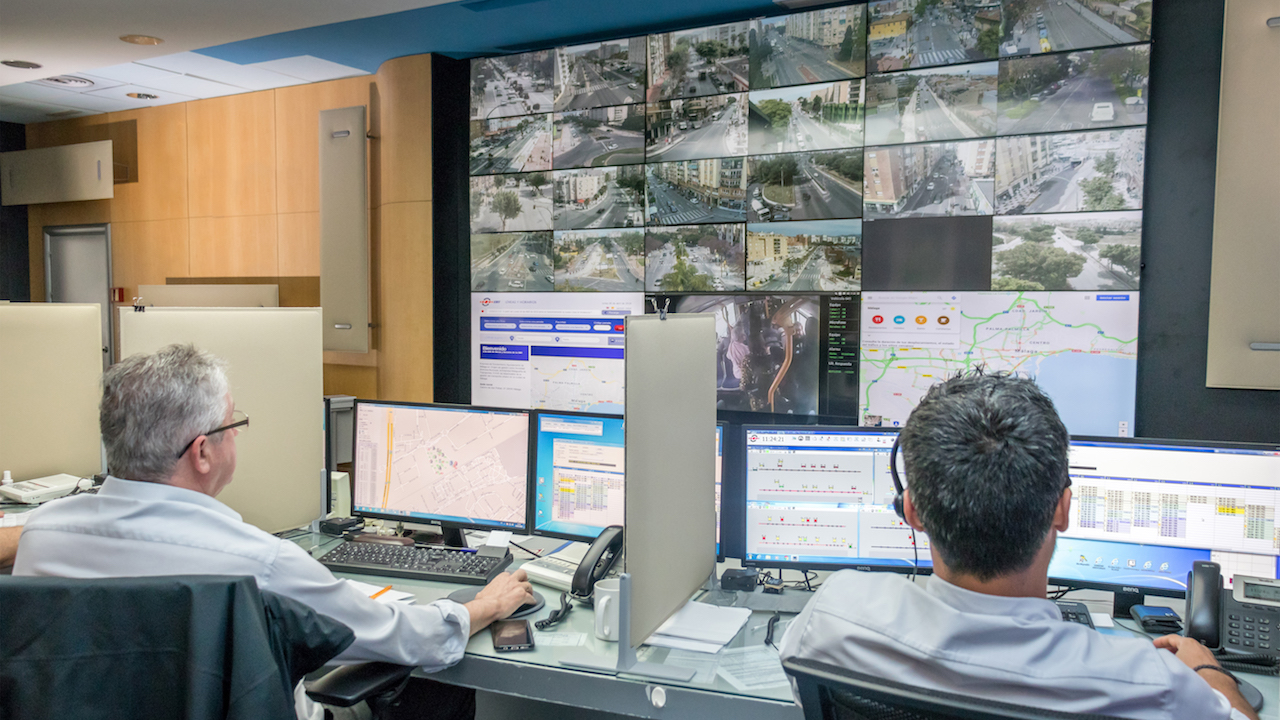SaaS-Based Video Walls Put the 'Control' Back in Control Rooms
Userful’s founder discusses how SaaS-based video walls put the “control” back in control rooms.

The control room is typically the nerve center of an operation, whether it’s a power plant, factory, airport, or any complex facility. Proper operation of such complex facilities requires operators to monitor and evaluate vast quantities of data to make informed decisions, often under pressure.
Video walls have become essential tools for operators and plant managers, supporting their efforts by providing flexible contextual awareness and ensuring all critical information is visible on a single display surface. More advanced video walls even provide tools for efficient manipulation and management of that information.
[LED Video Walls in Corporate Environments]
Data and live feeds synthesized from a variety of sources are displayed on the control room’s video walls as “sources,” which operators can configure in different layouts for different applications and switch between as necessary. Advanced video wall solutions allow sources to be brought forward, moved around, and resized in real time through a graphical user interface (GUI) that ideally runs within a web browser window, allowing operators to control the video wall from any device connected to the network.
There are several criteria that must be satisfied to ensure that a particular video wall solution will be a safe, efficient and cost-effective addition to facilities management best practices.
Flexibility
Control room operators need to review and manage data in different formats and from many different sources, including still cameras, video cameras, CAD and schematic diagrams, heat maps, and more—many of which you know of now, some of which you will only come to know about in the future. The hardware and software deployed must be able to support a broad range of sources and formats effectively.
Standalone Operation
The dependencies of your selected control room video wall solution must be minimal. Operator software that depends on specific operating systems or versions may limit your ability to upgrade or apply necessary security patches, or may require modifications to your operator’s computer images, which can create big obstacles to deployment. The system should be capable of operating with or without internet connectivity.
A daily selection of the top stories for AV integrators, resellers and consultants. Sign up below.
Cost Effectiveness
Even at the largest and most profitable facilities, managers focus on saving initial capital expenditures (capex) and long-term total cost of ownership (TCO). Choosing standards-based software solutions versus solutions based on large amounts of proprietary hardware can lead to enormous short- and long-term savings.
High Availability
Control room video walls must be both reliable and highly available, ensuring minimal downtime—through automatic failover, for example—thus providing operators and plant managers confidence that in the unlikely event of a hardware failure in a video wall server, their control room video wall will still be available to their operators.
Scalability
Management must be able to expand and/or update the configuration of their control room video walls—sometimes on very short notice—without interrupting operation to address changing circumstances, such as the installation of additional factory machinery.
SaaS Comes to the Control Room
SaaS, or software as a service, has disrupted nearly every software industry. SaaS is a natural fit for the control room, where reliability is first priority, and having access to the latest data and analysis comes a close second. SaaS brings predictability to the purchase of a software-based control room video wall, ensuring users always have full support and full access to all features for an optimized, inclusive, predictable cost. Customers can always access the latest patches and upgrades, putting these to work when it makes sense to do so. With a SaaS approach, there are no limits on scalability as facility needs change.
One common misconception of SaaS is that it runs on the cloud. This is not the case. SaaS is a model for purchasing, licensing, and supporting a software solution. While it may operate from a cloud server, a SaaS system may also exist on physical equipment running securely within your facility. Facilities usually handle a range of content, from confidential information that demands the highest levels of security, to simple staff education videos that are available to everybody. For advanced operations, the on-premise option eliminates many typical SaaS concerns around security of content processing and storage.
[Trends in Command and Control Rooms]
For simpler control rooms, an on-premises server solution is not always required. System-on-a-chip (SoC) display technology allows software solutions to take advantage of the processing power of a smart display to work in combination with a cloud server to deliver centrally controlled contextual information and live feeds. Of course, this approach should be reserved for status dashboards with minimal interactivity requirements or security needs. For content with high security, advanced interaction and processing demands, an on-premise server—deployed within the facility’s network—can be used to process and deliver the data. In both cases, video wall and content management can be done entirely from the browser with the predictability and flexibility of a SaaS model.
With a software-based approach, integrators can choose either an on-premise server with advanced security, flexibility and interactivity, or a simpler cloud-based model to create powerful control room solutions delivered directly to a smart display—creating an almost hardware-free video wall that eliminates the need for media players, thin clients, cables, extenders, servers, converters, and other devices that video walls have required in the past.
The importance of real-time monitoring and situational awareness is increasing. New threats, and new data feeds, are coming online nearly every day. Being able to take responsive, decisive, informed action is crucial in almost every organization. As the nerve center of the operation, the control room’s video wall is a critical tool to help facilitate the kind of operations and decision-making you want your team to be able to do. Robust, reliable, advanced control room solutions are one of the best investments you can make to ensure the ongoing safety and security of critical operations and facilities.
